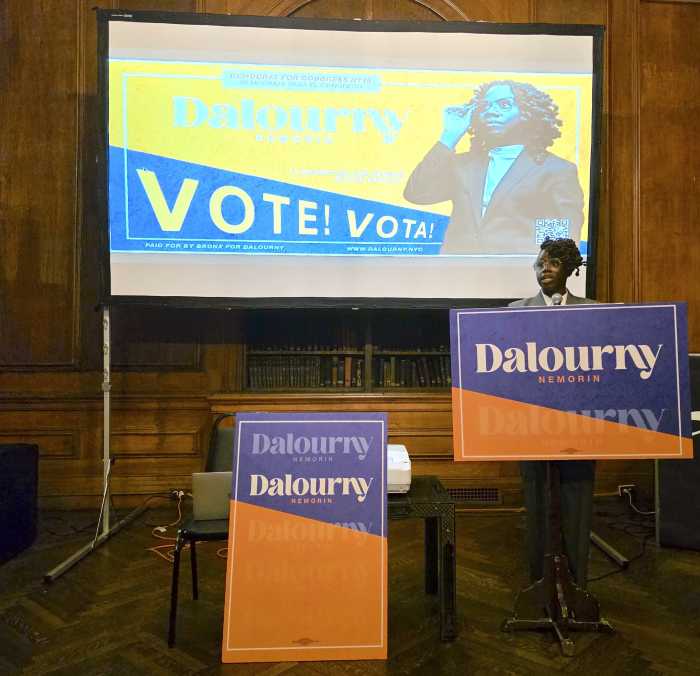Canadian director looks at ethnic strife amongst Winnipeg’s indigenous peoples
Noam Gonick’s “Stryker,” the Cracker Jack toy in the 2005 “Canadian Front: New Films” series at the Museum of Modern Art, is a tourist with an agenda—it wants to remake the popular image of indigenous North American people.
Gonick’s acclaimed debut feature “Hey, Happy!” (2001), could have easily catapulted his ambition into an expensive, star-laden film project. Instead, he focused on a modestly scaled, yet arguably more ambitious film in “Stryker,” selected to represent Canadian cinema in last year’s Venice Film Festival—a distinction all the more noteworthy for the film’s resolute iconoclasm.
Set in Winnipeg, Gonick’s birthplace and home to Canada’s fastest-growing aboriginal population, “Stryker” envisions the city’s North End as a desiccated exurbia in a state of perpetual siege. A racial gang war rages between the Asian Bomb Squad, an assortment of preening, buffed Filipinos captained by the neurotic mixed-blood Omar (Ryan Black), and their arch-foes, the Indian Posse, fronted by the volcanic Mama Ceece (Deena Fontaine). A stone cold gangsta and swaggering dyke Casanova, Mama Ceece has just gotten back from prison and is hell-bent on retaking her share of the narcotics and sex trade forfeited to Omar in her absence.
Into this enjoyably lurid scenario stumbles a 14-year-old Indian boy known only as Stryker (Kyle Henry), Canadian slang for a wannabe gang-banger. More of a mooncalf presence than a functioning actor, the first-timer Henry unwisely tries to mask his unease by exaggerating it, pulling a mute shtick and relying on puppyish mugging to scrape through. Fortunately, vigorous plotting and zesty performances from the rest of a largely nonprofessional cast compensate for this failing.
The film opens on the Brokenhead Ojibway Reserve in northern Manitoba, with the pyromaniac Stryker fleeing an abandoned wooden church he’s just set ablaze. In an extraordinary shot that caught the attention of Robert Enright, a top Canadian critic, Stryker runs from the burning church seen in the distance, between a herd of watchful, ice-flecked buffalo, and under a highway overpass to hop on a passing freight train that carries him to Winnipeg. In one gesture, Gonick condenses “all the components of a symbolic history—the church, nature, and the technologies of transport—that marked the passing of one way of life and the imposition of another,” Enright wrote.
Thug life reigns in “Stryker,” a ghetto-fabulous fantasy of lawless Indian youth, set to an impressive original hip-hop score by the Alberta-based emcee Hellnback. As the newly arrived Stryker wanders the North End’s boarded-up avenues, the crunk beats and insinuating keyboard licks articulate parallels between the historic dispossession of Native Americans by European immigrants and the forced importation of Africans to the “new world” by the same crowd. The mixed-blood transsexual hooker Daisy (Joseph Mesiano), another Brokenhead refugee, befriends Stryker and shelters the waif. Daisy’s lair turns out to be a slum oasis of Almodóvarian kitsch—a lime green-and-mauve henhouse of queens who exchange affable bitchery while doting over the confused lad.
For unknown reasons, Stryker goes looking for Mama Ceece. He and some Indian Posse brothers get busted by the cops, and down at juvenile hall they run into rival thugs from the Deuce Crew. In the ensuing detention yard brawl, Mama Ceece appears at the fence, at once scolding and rallying them in her swashbuckling style: “While we been fightin’ each other, that half-breed cocksucker Omar and his Flip faggots squeezed up the middle and boosted our hookup. We gotta come together to beat that rat shit back into the ground. We join in one war… and we can rule the North End together.”
“Stryker” is a deeply serious film, but a huge part of its charm is how easily Gonick’s didactic intentions succumb to the pleasure principle. The film keeps defaulting to a boisterous house-party mode, and many of its sharpest political moments are crucially wrapped in sly humor. Gonick hurls some ironic darts—as when a paramedic vehicle indifferently glides past while Omar slaps Daisy around in broad daylight—and inserts priceless comic bits like the towering, one-eyed Indian woman who stalks the North End wielding a carved wooden staff. She ambushes whites—sneaking up on a trio of grannies, hollering, “Get the fuck off of native land! Taking it back, you white bitches!”—and randomly exhorts Indian passersby to reclaim traditional ways.
Gonick fancifully imagines the cryptic Stryker as a sort of avenging angel, purging Indians of the white man’s diseases—poverty, crime, addiction—with his purifying outbursts of arson. Yet the boy meets an ambiguous, possibly tragic end. He gets picked up again by the law, but this time by a rogue cop who takes him on a “starlight tour,” the sinister covert police practice of driving undesirable vagrants to the city’s remote outskirts on sub-zero nights and leaving them, drunken or beaten unconscious, to freeze to death.
In a concluding montage mirroring the opening church-burning sequence, a close-up of Stryker’s face dissolves to him surmounting a snow-covered hillside to gaze upon Winnipeg’s high-rise metropolitan center, bathed in tawny sunlight as peach-tinted clouds billow behind his inscrutable expression. This coda can be seen as a reproach against indigenous people’s exclusion from Canadian society, or as a tentatively promising image of rebirth and renewal.
Ed Lachman’s cinematography deserves special mention for making coherent the disparate strands of Gonick’s tale. Renowned for lensing the enameled period surfaces of “Far From Heaven” (2002) and the gossamer textures of “The Virgin Suicides” (1999), Lachman here reaches back to some of the pictorial effects of the new-wave cult classic “Union City” (1980). He devises memorable shots washed in an even slate blue, pierced with highlights of neon pink and orange, and elsewhere creates a striking calligraphic impression of inky figures against flat, snow-whitened backdrops.
Risk-averse U.S. distributors are unlikely to gamble on “Stryker,” so you shouldn’t miss this chance to catch up with Gonick before he becomes a household name.
gaycitynews.com




































